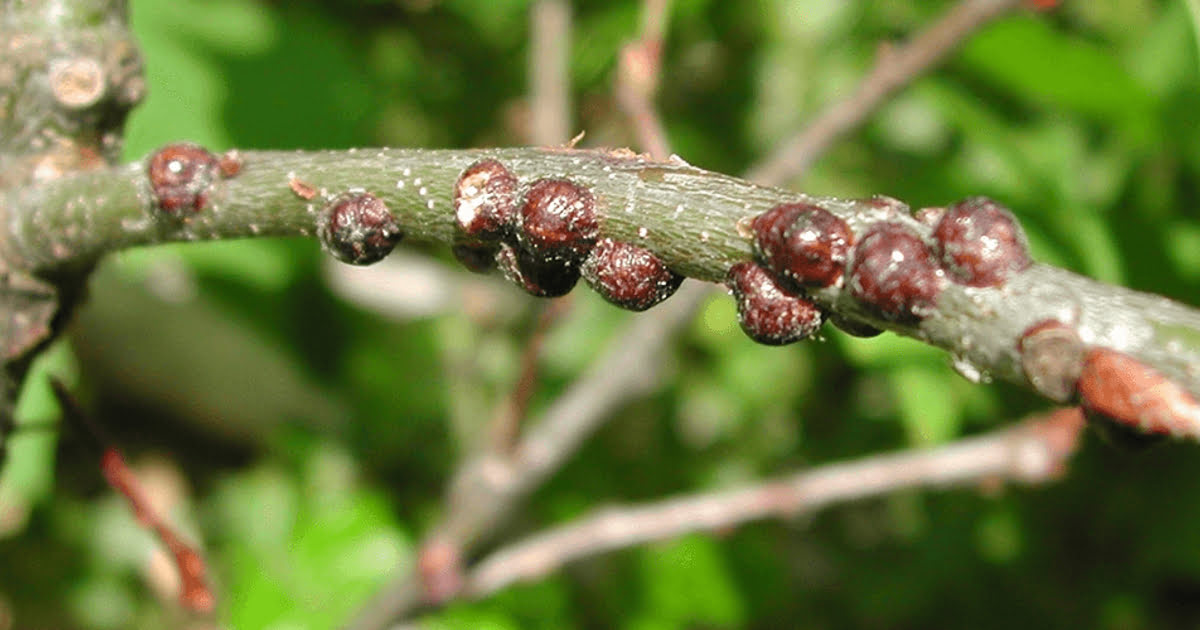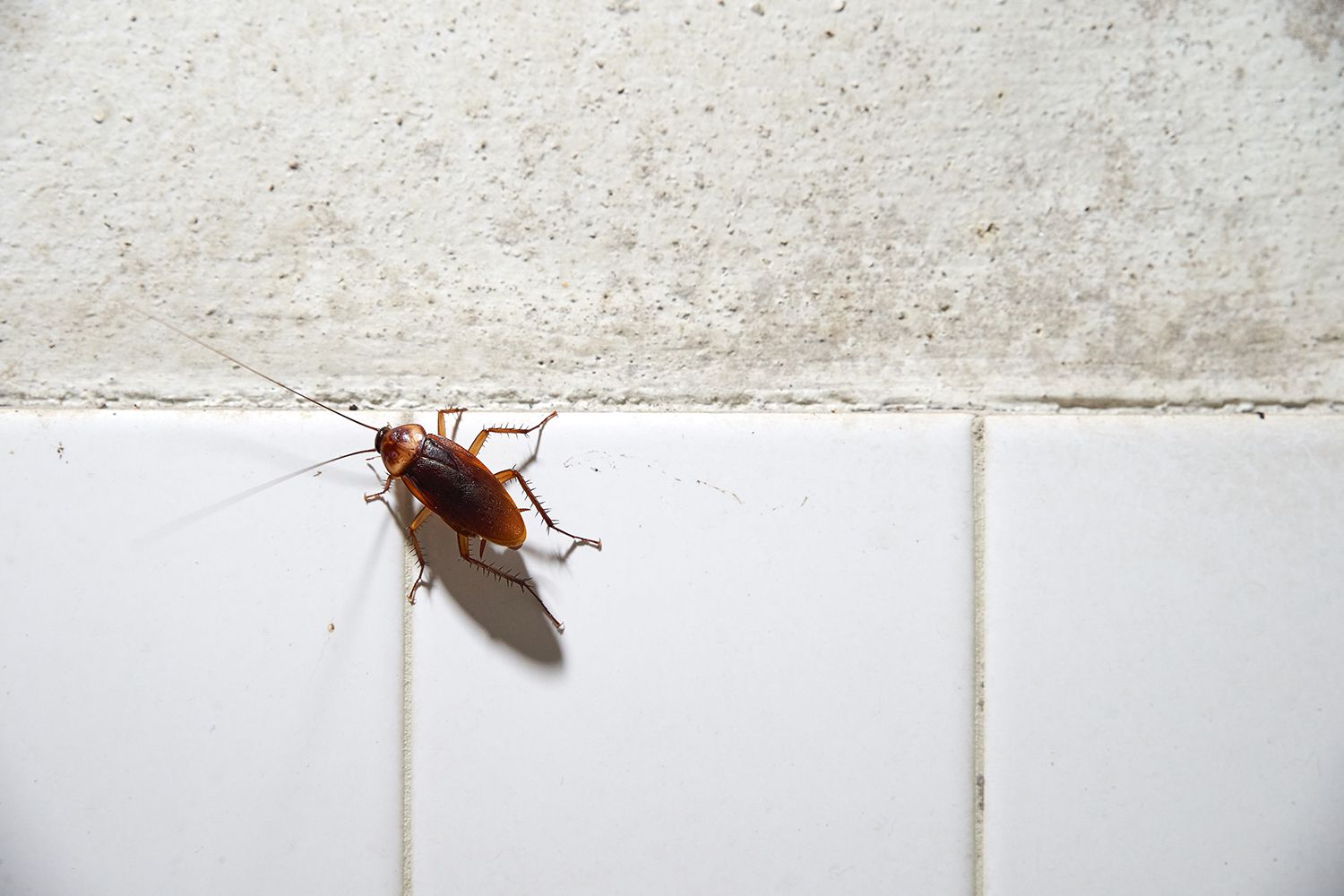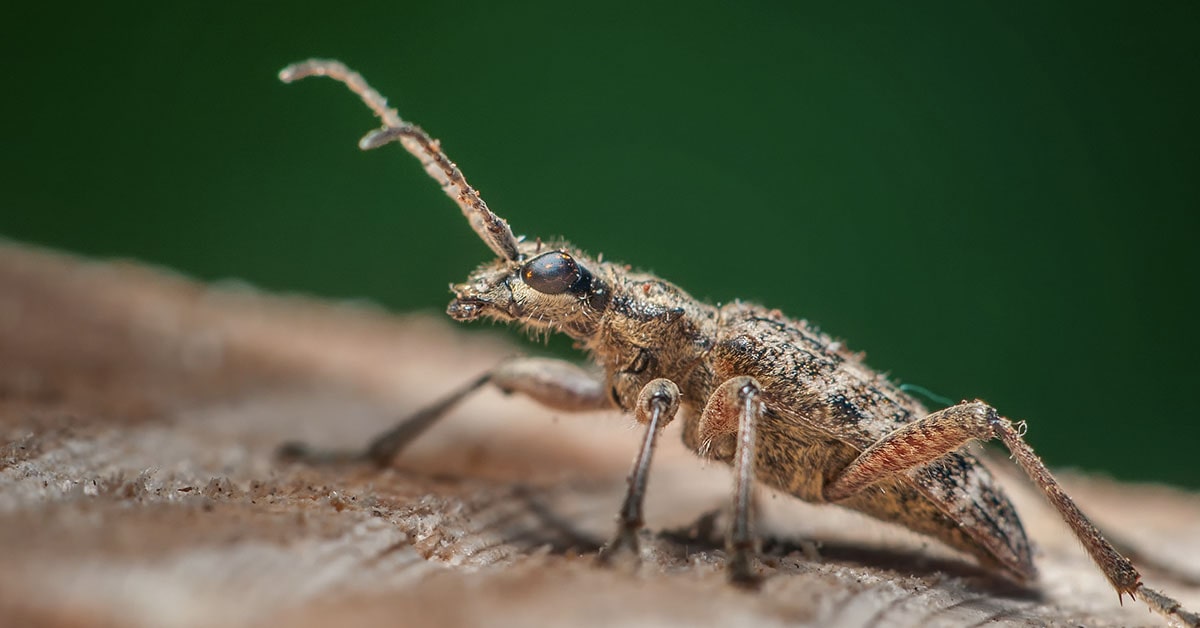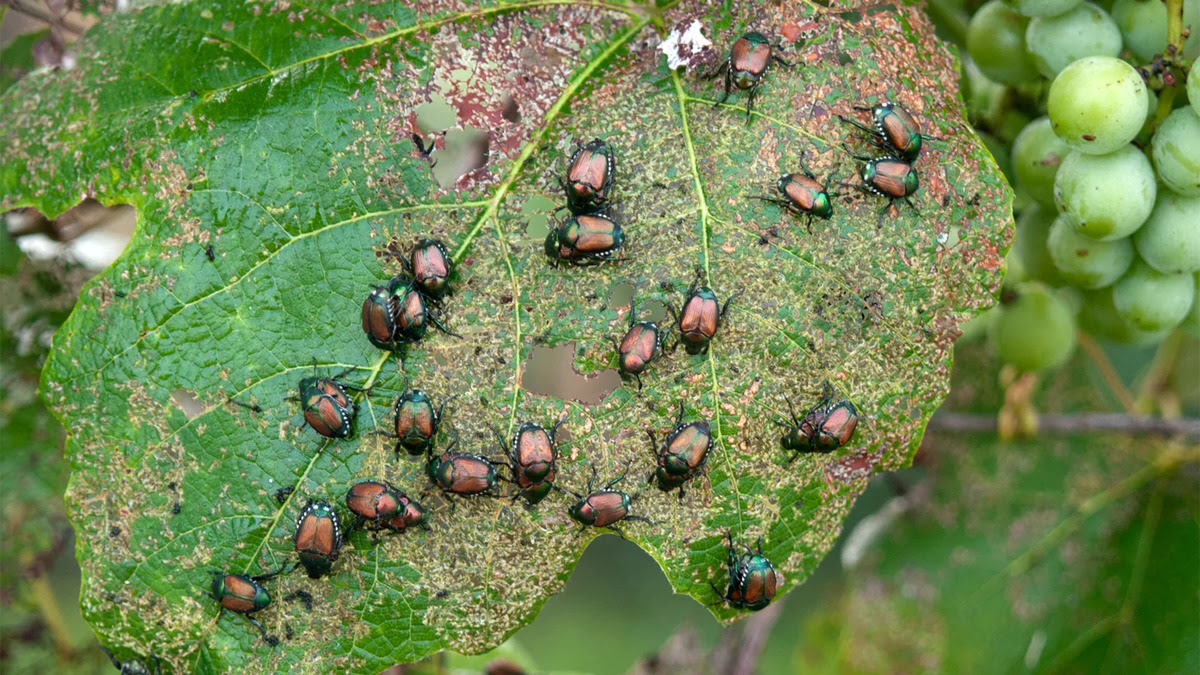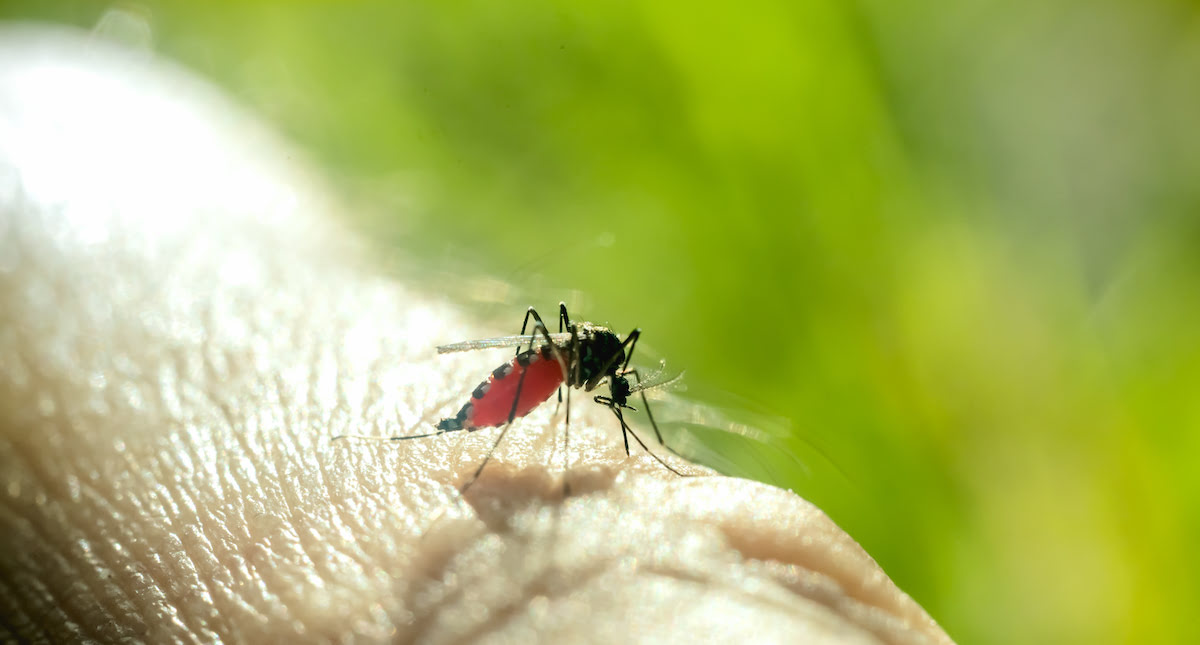Home>Gardening News and Trends>Latest News>How Do Insects Differ From Other Arthropods?
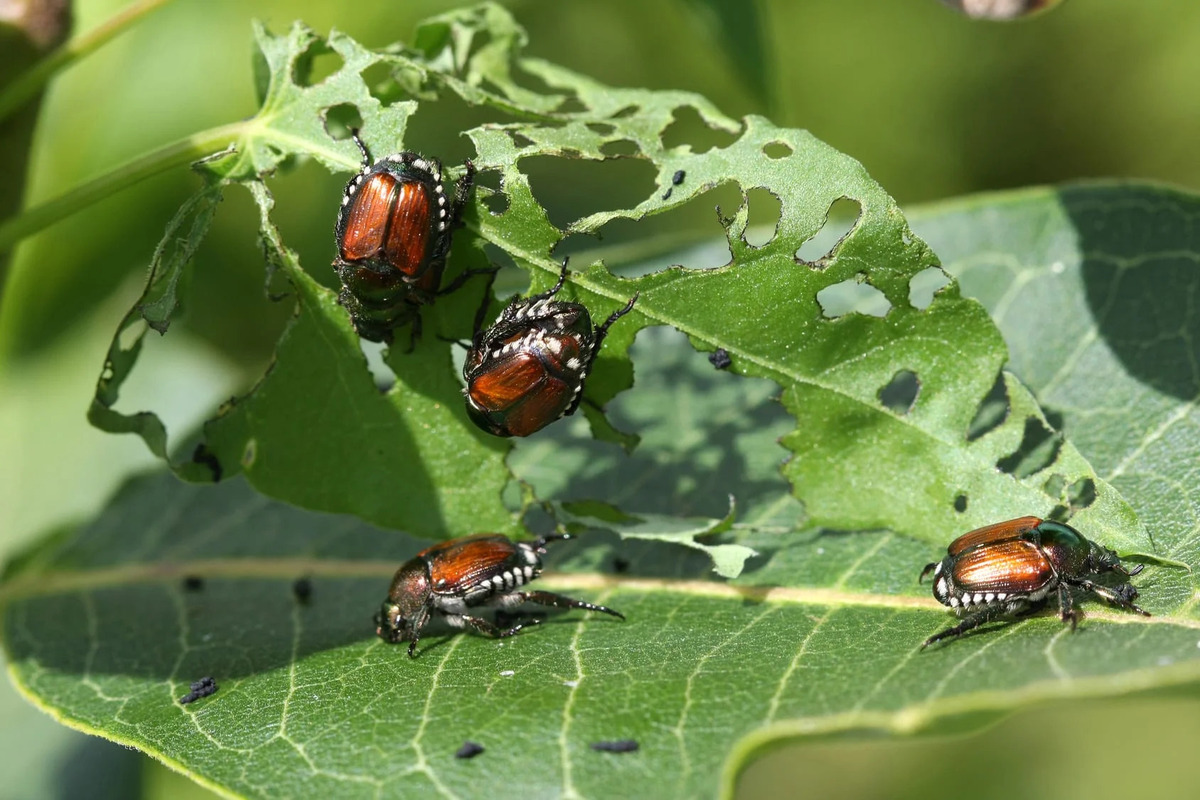

Latest News
How Do Insects Differ From Other Arthropods?
Modified: January 22, 2024
Discover the latest news on how insects differ from other arthropods. Dive into their unique characteristics and evolutionary adaptations in this informative article.
(Many of the links in this article redirect to a specific reviewed product. Your purchase of these products through affiliate links helps to generate commission for Chicagolandgardening.com, at no extra cost. Learn more)
Table of Contents
Introduction
Arthropods form the largest and most diverse group of animals on Earth, with over 1 million described species. They can be found in almost every habitat, from the deepest oceans to the highest mountains. One of the key subgroups within the phylum Arthropoda is insects. Insects are a diverse group of arthropods that make up the largest class within the arthropod phylum, with over a million identified species.
Arthropods, including insects, are characterized by their jointed limbs and hard exoskeleton, which provides support and protection. This exoskeleton is made up of chitin, a tough, flexible substance that allows for movement and growth. Another distinguishing feature of arthropods is their segmented body plan, which is divided into three main regions: the head, thorax, and abdomen.
While arthropods share many similarities, such as their exoskeleton and segmented body, insects have several unique characteristics that differentiate them from other arthropods. Some of these features include their specialized mouthparts, compound eyes, and wings. Insects also undergo metamorphosis during their life cycle, transitioning from eggs to larvae to pupae and finally to adults.
Other arthropods, such as spiders, crustaceans, and millipedes, have their own set of distinctive features that set them apart from insects. For example, spiders have specialized silk-producing glands, multiple pairs of eyes, and a two-segmented body plan. Crustaceans, on the other hand, have two pairs of antennae, gills, and a hard carapace that protects their bodies.
In this article, we will explore the characteristics of arthropods in general, delve into the unique features of insects, and highlight the differences between insects and other arthropods. By understanding these distinctions, we can gain a deeper appreciation for the incredible diversity and adaptations of this fascinating group of animals.
Characteristics of Arthropods
Arthropods are characterized by several common features that differentiate them from other animal groups. These characteristics contribute to their incredible diversity and success. Let’s explore some of the key traits that define arthropods:
- Exoskeleton: Arthropods have a hard exoskeleton made of chitin. This external covering provides support, protection, and serves as a attachment point for muscles. It also helps prevent water loss and provides structural support for jointed limbs.
- Segmentation: The body of an arthropod is composed of a series of segments. This segmentation allows for flexibility and specialization of body regions, enabling arthropods to perform a wide range of functions.
- Jointed Appendages: Arthropods possess jointed limbs that are specialized for various functions, such as walking, capturing prey, or swimming. These appendages are attached to the body segments and can move independently.
- Compound Eyes: Many arthropods, including insects, have compound eyes. Compound eyes consist of multiple lenses, each with its own photoreceptor cells. This allows for a wide field of vision and enables detection of movement and light intensity.
- Respiratory System: Arthropods have a highly efficient respiratory system that varies between different groups. Some arthropods have specialized gills, while others have tracheal tubes or book lungs to facilitate gas exchange.
- Molting: Arthropods undergo molting, also known as ecdysis, to grow and develop. During molting, the old exoskeleton is shed, and a new and larger exoskeleton is formed underneath. This process allows arthropods to grow in size and accommodate their increasing body mass.
These characteristics have played a crucial role in the success and adaptation of arthropods in diverse environments. They have allowed arthropods to occupy a wide range of ecological niches, from crawling on the forest floor to flying through the air or swimming in the depths of the ocean.
Classification of Arthropods
Arthropods are a diverse group of organisms, comprising numerous species that have adapted to different habitats and lifestyles. They are classified into several distinct classes based on shared characteristics and evolutionary relationships. Let’s take a closer look at some of the major classes within the phylum Arthropoda:
- Insecta (Insects): Insects are the largest class within the phylum Arthropoda, with over a million identified species. They are characterized by having three body regions (head, thorax, and abdomen), six legs, a pair of antennae, and often wings as adults. Insects play vital roles in ecosystems as pollinators, decomposers, and as a food source for other organisms.
- Arachnida (Spiders and Scorpions): Arachnids are characterized by having two body regions (cephalothorax and abdomen), four pairs of legs, and usually no wings or antennae. This class includes spiders, scorpions, ticks, and mites. They are mostly terrestrial and have specialized feeding structures such as fangs or pincers.
- Crustacea (Crustaceans): Crustaceans are predominantly aquatic arthropods that include crabs, lobsters, shrimp, and barnacles. They have two pairs of antennae, two or three body regions, and biramous appendages (branches into two). Crustaceans have diverse feeding strategies and occupy various aquatic habitats, from freshwater lakes to the depths of the ocean.
- Myriapoda (Millipedes and Centipedes): Myriapods are elongated arthropods with numerous body segments and many legs. They are divided into two main groups: millipedes, which have two pairs of legs per body segment and are herbivorous, and centipedes, which have one pair of legs per body segment and are primarily carnivorous. Myriapods are mainly terrestrial and play important roles in decomposing organic matter.
- Chelicerata (Horseshoe Crabs and Sea Spiders): Chelicerates have two body regions (prosoma and opisthosoma), six pairs of appendages, and no antennae. This class includes horseshoe crabs, sea spiders, and extinct groups like eurypterids. They have a wide range of adaptations and occupy diverse habitats, from marine environments to terrestrial ecosystems.
These are just a few examples of the diverse classes within the phylum Arthropoda. Each class encompasses a wide range of species with unique features and adaptations. The classification of arthropods allows scientists to study and understand their evolutionary relationships and ecological roles.
Features of Insects
Insects, a class within the phylum Arthropoda, are the most diverse and abundant group of animals on Earth. They exhibit a range of unique features that set them apart from other arthropods. Let’s explore some of the key characteristics of insects:
- Specialized Mouthparts: Insects have a variety of specialized mouthparts adapted for different feeding habits. Examples include chewing mouthparts, like those found in grasshoppers and beetles, which are used for consuming vegetation. Other insects, such as mosquitoes, have piercing-sucking mouthparts for feeding on the blood of animals.
- Compound Eyes: Insects have complex compound eyes composed of numerous lenses called ommatidia. These eyes provide a wide field of vision and allow for quick detection of movement. In addition to compound eyes, some insects also have simple eyes, known as ocelli, which detect light intensity and direction.
- Wings: One of the most distinguishing features of insects is their ability to fly. Most adult insects have one or two pairs of wings attached to the thorax. Wings provide insects with the ability to explore new habitats, escape predators, and seek mates. However, there are also wingless insects, such as ants and fleas, that have adapted to a terrestrial lifestyle.
- Metamorphosis: Insects undergo a process called metamorphosis during their life cycle. This transformation involves distinct stages, including egg, larva, pupa, and adult. Metamorphosis allows insects to occupy different ecological niches and reduces competition among various life stages.
- Social Behavior: Many insects exhibit complex social behaviors, living in organized colonies with specialized roles. Ants, bees, and termites are prime examples of social insects. These societies display division of labor, with individuals specialized in tasks such as foraging, defense, and reproduction.
- Segmented Body: Like all arthropods, insects have a segmented body made up of three regions: head, thorax, and abdomen. The head bears the sensory organs and mouthparts, while the thorax is responsible for locomotion, housing the legs and wings. The abdomen contains vital organs, such as the digestive and reproductive systems.
These features contribute to the incredible success and adaptability of insects. Their ability to occupy diverse habitats, their varied feeding habits, and their crucial roles as pollinators and decomposers make them indispensable to ecosystems worldwide.
Unique Characteristics of Other Arthropods
In addition to insects, the phylum Arthropoda encompasses a diverse array of other arthropods, each with its own set of unique characteristics. Let’s explore some of the distinguishing features of a few notable groups:
- Arachnids: Arachnids, which include spiders, scorpions, ticks, and mites, possess some unique characteristics. They have specialized structures called chelicerae, which are used for capturing and manipulating prey. Most arachnids also produce silk from glands located in their abdomen, which is used for constructing webs or creating shelter. Additionally, arachnids have book lungs or tracheae for respiratory exchange, rather than the tracheal system found in insects.
- Crustaceans: Crustaceans, such as crabs, lobsters, and shrimp, have their own distinctive traits. They typically possess two pairs of antennae, which are important sensory organs. Many crustaceans also have gills for respiration, allowing them to extract oxygen from water. Another notable feature is their exoskeleton, which often contains calcium carbonate, making it harder compared to the chitinous exoskeleton of insects.
- Myriapods: Myriapods, including millipedes and centipedes, have unique adaptations suited to their terrestrial lifestyles. Millipedes possess numerous body segments, each bearing two pairs of legs, giving them their characteristic “thousand legs” appearance. They are often slow-moving and use chemical defenses to deter predators. Centipedes, on the other hand, are fast-moving and possess venomous fangs to capture and immobilize their prey. Each body segment of a centipede has a single pair of legs.
- Chelicerates: Chelicerates, which include horseshoe crabs, sea spiders, and extinct eurypterids, have features that set them apart from other arthropods. They possess chelicerae, which are modified into pincers or fangs for various purposes. The body of chelicerates is divided into two regions, the prosoma (cephalothorax) and opisthosoma (abdomen). Additionally, their appendages are modified for different functions, such as walking, grasping prey, or sensing the environment.
These unique characteristics contribute to the diversity and adaptation of other arthropods within the phylum. They have evolved specialized structures and behaviors that enable them to thrive in their respective environments and carry out important ecological roles.
Comparison between Insects and Other Arthropods
While insects are a class within the phylum Arthropoda, they exhibit several key differences that distinguish them from other arthropods. Let’s compare insects to other arthropod groups in terms of their characteristics and adaptations:
- Body Structure: Insects have three distinct body regions: head, thorax, and abdomen. Other arthropods may have a different number of body regions, such as the cephalothorax and abdomen found in arachnids. Additionally, the appendages of insects are mainly used for locomotion and manipulation, whereas other arthropods, such as arachnids with their chelicerae, have specialized appendages for capturing prey or creating silk.
- Wings and Flight: Insects are unique among arthropods in their ability to fly. Most adult insects possess one or two pairs of wings, which allow them to explore new habitats, avoid predators, and find mates. Other arthropods, like arachnids and crustaceans, do not have wings and have adapted to terrestrial or aquatic lifestyles.
- Metamorphosis: Insects undergo metamorphosis during their life cycle, transitioning through distinct stages such as egg, larva, pupa, and adult. This process allows insects to exploit different ecological niches and reduces competition among different life stages. In contrast, other arthropods, such as arachnids and crustaceans, generally do not undergo complete metamorphosis and instead exhibit gradual growth and molting.
- Specialization and Adaptation: Insects have a remarkable ability to specialize and adapt to a range of environments and food sources. They have evolved specialized mouthparts, such as piercing-sucking mouthparts in mosquitoes, for accessing nectar or blood. Other arthropods, such as arachnids, have their own unique adaptations, such as venomous fangs or silk production for capturing prey or creating shelter.
- Social Behavior: Insects are known for their complex social behaviors, forming organized colonies with specialized roles. Ants, bees, and termites are prime examples of social insects where individuals work together for the benefit of the colony. However, this level of social organization is not as common in other arthropods.
Despite these differences, insects and other arthropods share common traits, such as having exoskeletons, segmented bodies, and jointed appendages. They are all highly successful groups that have colonized diverse habitats and play important ecological roles. Understanding the distinctions between insects and other arthropods enriches our understanding of the incredible diversity and evolutionary adaptations within the phylum Arthropoda.
Conclusion
The phylum Arthropoda encompasses a vast array of organisms, with insects representing the largest and most diverse class within this group. Insects possess unique characteristics such as specialized mouthparts, compound eyes, and wings, as well as undergoing metamorphosis in their life cycle. These features enable insects to occupy a wide range of habitats and ecological niches.
However, it is important to recognize that insects are not the only remarkable arthropods. Other arthropod groups, such as arachnids, crustaceans, myriapods, and chelicerates, exhibit their own distinct features and adaptations. From the silk-producing spiders to the aquatic crustaceans with their multi-branched appendages, each group has evolved specialized traits that suit their specific lifestyles.
By comparing insects to other arthropods, we gain a deeper appreciation for the incredible diversity within the phylum Arthropoda. Each arthropod group has its own unique characteristics and adaptations that allow it to thrive in different environments. This diversity provides a fascinating testament to the ingenuity and adaptability of life on our planet.
Studying arthropods not only helps us unravel their evolutionary history, but it also sheds light on broader ecological relationships, such as pollination, decomposition, and food webs. Arthropods play crucial roles in ecosystems, influencing the health and balance of natural environments.
In conclusion, arthropods, including insects, are an amazing group of organisms that have successfully adapted to diverse environments and lifestyles. Their unique characteristics, such as exoskeletons, segmented bodies, and jointed appendages, have allowed them to flourish and occupy vital ecological roles. By appreciating and understanding the distinctions between insects and other arthropods, we can gain a deeper understanding of the rich tapestry of life on Earth.
